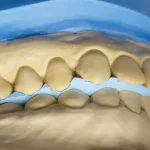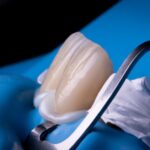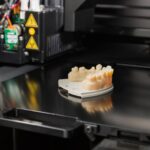
Legionella pneumophila is a thin, flagellated, Gram-negative bacterium of the Legionella genus and is responsible for infections in humans that mainly affect the respiratory system. (1)
The infection can manifest itself in a serious clinical form called Legionellosis or Legionnaires’ disease, so called because in 1976 a serious epidemic spread in a hotel in Philadelphia where the meeting of the participants of the American Legion was taking place; there were 221 infections and 34 victims. The source of bacterial contamination was identified in the hotel’s air conditioning system.
Legionellosis presents as an infectious pneumonia after an incubation period of 2-10 days. Complications of legionellosis may include lung abscess, empyema, respiratory failure, shock, disseminated intravascular coagulation, thrombocytopenic purpura and renal failure.
The overall mortality rate of legionellosis is estimated at between 5 and 10%. This rate is related to specific factors such as the severity of the disease, the appropriateness of the initial antibiotic treatment, the place where the infection was contracted, the patient’s previous conditions and can reach 40-80% in untreated immunosuppressed patients. (1)
The risks of legionella in dental offices
Legionella is present endemically in natural and artificial aquatic environments (rivers, lakes, thermal springs). From these environments, however, it can pass into artificial water circuits such as city conduits, water systems, tanks, pipes, fountains and swimming pools and find a perfect habitat in which to expand, amplify and disseminate, representing a problem for public health.
Humans can come into contact with Legionella by inhaling or aspirating aerosols containing this bacterium. (2)
Due to the potential severity of the disease (especially in debilitated subjects), the way it is transmitted and the habitat of this bacterium, legionella has always been considered a problem to be carefully monitored in hospitals and especially in dental practices. There have been documented cases of proven legionella infection occurring within dental practices, unfortunately even resulting in fatalities. (3-8)
In fact, suction circuits, filters, water circuits and air conditioning systems can all serve as ideal reservoirs for these bacteria.
Risk factors: how to prevent the proliferation of legionella
The first concept to consider to prevent the spread of legionella and therefore prevent cases of legionellosis which can also be lethal is the correct design of the plumbing and sanitary systems of the practice. Heating, cooling and humidification systems are to be considered systems at risk and extreme attention must be paid to their correct maintenance. (1)
In addition to ordinary maintenance it is necessary to implement preventive measures that include the disinfection of all systems at risk.
It should be kept in mind that legionella can survive and grow by organising itself into complex biofilms, making it more difficult to eradicate. (2)
The factors that increase the possibility of proliferation of this type of bacteria are (2):
- Some temperature ranges inside water systems
- Failure to use disinfectant solutions
- Stagnant water
Maintenance and disinfection strategies for dental practices
In addition to the ordinary maintenance of the air conditioning, the replacement of filters and checks of heating systems, special attention must be paid to the water circuit that supplies the dental units.
Handpieces, turbines and ultrasonic scalers are capable of generating an enormous quantity of aerosol which can remain suspended for several seconds. This aerosol can be inhaled by patients as well as by staff and can settle in the lower airways. If the aqueous particles (droplets) contain a good number of pathogenic bacteria and the subject has other risk factors, a potentially very harmful infection can develop.
Another route of infection is direct aspiration of water into the lungs. It normally occurs in subjects with swallowing defects, but due to the position and type of treatments in the dental environment, it represents a further risk of infection. (2)
In the dental environment, various precautions and strategies are proposed in the literature to prevent cases of legionellosis and to ensure good water and air quality for patients and operators. (3,4,8)
First of all, it is recommended to use anti-stagnation and continuous circulation water systems, in order to limit water stagnation which, as mentioned earlier, constitutes a risk factor for the proliferation of legionella.
Therefore, it is suggested to use sterile water inside the dental unit’s water line, instead of the main water supply. Another system is the application of a discontinuous or continuous disinfectant treatment, capable of breaking down biofilms and disinfecting the circuits while not being harmful to the patient.
It is also essential to wash all the outlets daily prior to each dental treatment; before any procedure, in fact, it is necessary to use the turbine/handpiece for a few seconds to allow the water that has remained still in the circuits to flow. In this regard, the installation of filters upstream of the handpieces and turbines is recommended.
Within the Zhermack Hygiene range, Zeta 5 Power Act is the product of choice for the daily disinfection and cleaning of suction circuits and spittoons. Zeta 5 Power Act is a concentrated disinfectant and cleaner based on alkylamine and quaternary ammonium salts with a broad spectrum of action that allows you to choose between two action times: standard evening disinfection or rapid disinfection in just 15 minutes*.
* Excluding tuberculocidal action
References
- https://www.epicentro.iss.it/legionellosi/#:~:text=Complessivamente%20la%20letalit%C3%A0%20della%20legionellosi,5%25%20e%20il%2010%25.&text=La%20legionellosi%20pu%C3%B2%20manifestarsi%20in,una%20forma%20molto%20meno%20grave.
- https://www.cdc.gov/legionella/causes/index.html
- Ricci, M. L., Fontana, S., Pinci, F., Fiumana, E., Pedna, M. F., Farolfi, P., … & Scaturro, M. (2012). Pneumonia associated with a dental unit waterline. The Lancet, 379(9816), 684.
- Ma’Ayeh, S. Y., Al#LioxSpecialChar8208#Hiyasat, A. S., Hindiyeh, M. Y., & Khader, Y. S. (2008). Legionella pneumophila contamination of a dental unit water line system in a dental teaching centre. International journal of dental hygiene, 6(1), 48-55.
- Atlas, R. M., Williams, J. F., & Huntington, M. K. (1995). Legionella contamination of dental-unit waters. Applied and environmental microbiology, 61(4), 1208-1213.
- Challacombe, S. J., & Fernandes, L. L. (1995). Detecting Legionella pneumophila in water systems: a comparison of various dental units. The Journal of the American Dental Association, 126(5), 603-608.
- Tuvo, B., Totaro, M., Cristina, M. L., Spagnolo, A. M., Di Cave, D., Profeti, S., … & Casini, B. (2020). Prevention and control of Legionella and Pseudomonas spp. colonization in dental units. Pathogens, 9(4), 305.
- Lauritano, D., Nardone, M., Gaudio, R. M., Candotto, V., & Carinci, F. (2017). Risk assessment of colonization of legionella spp. in dental unit waterlines. Oral & Implantology, 10(3), 283.
Would you like more information about Zhermack Dental products and solutions?
Contact us




 Zhermack SpA has been one of the most important producers and international distributors of alginates, gypsums and silicone compounds for the dental sector for over 40 years. It has also developed solutions for the industrial and wellbeing sectors.
Zhermack SpA - Via Bovazecchino, 100 - 45021 Badia Polesine (RO), Italy.
Zhermack SpA has been one of the most important producers and international distributors of alginates, gypsums and silicone compounds for the dental sector for over 40 years. It has also developed solutions for the industrial and wellbeing sectors.
Zhermack SpA - Via Bovazecchino, 100 - 45021 Badia Polesine (RO), Italy.


